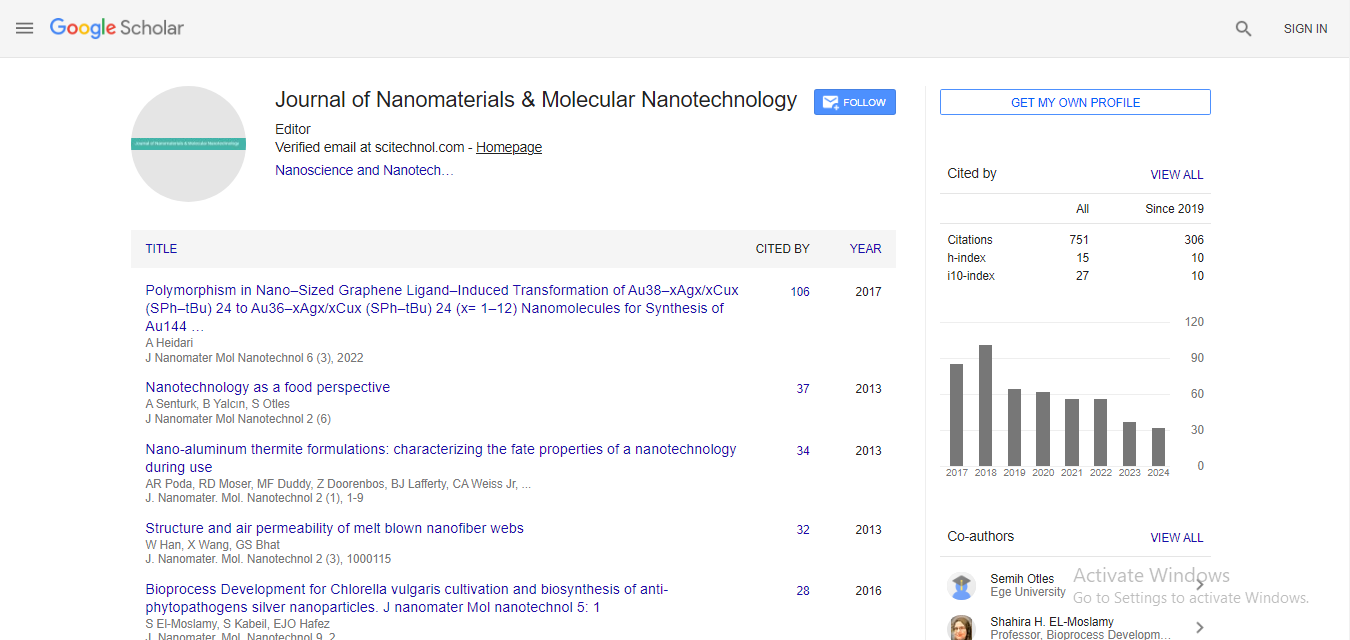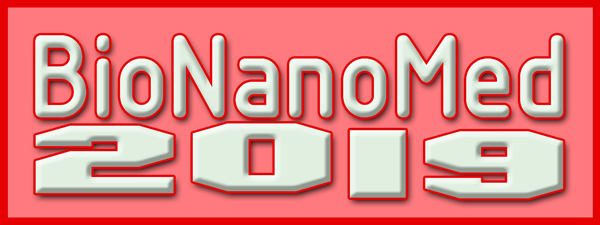Opinion Article, J Nanomater Mol Nanotechnol Vol: 13 Issue: 5
Self-Assembly of Nanomaterials: Mechanisms and Applications in Device Fabrication
Sarah McLeod*
1Department of Nanotechnology, University of Toronto, Toronto, Canada
*Corresponding Author: Sarah McLeod,
Department of Nanotechnology,
University of Toronto, Toronto, Canada
E-mail: sarah_mc@edu.ca
Received date: 23 September, 2024, Manuscript No. JNMN-24-149318;
Editor assigned date: 25 September, 2024, PreQC No. JNMN-24-149318 (PQ);
Reviewed date: 09 October, 2024, QC No. JNMN-24-149318;
Revised date: 17 October, 2024, Manuscript No. JNMN-24-149318 (R);
Published date: 25 October, 2024, DOI: 10.4172/2324-8777.1000436
Citation: McLeod S (2024) Self-Assembly of Nanomaterials: Mechanisms and Applications in Device Fabrication. J Nanomater Mol Nanotechnol 13:5.
Abstract
Description
Nanotechnology has transformed multiple fields, including electronics, medicine and material science. At the core of this revolution is the self-assembly of nanomaterials a process where basic units like atoms, molecules, or particles organize themselves into welldefined structures. This natural organization has drawn attention due to its ability to create complex nanostructures without the need for external intervention. Understanding the mechanisms behind selfassembly and finding its applications in device fabrication have become essential for further advancements in technology. Selfassembly is a bottom-up approach, distinct from traditional top-down manufacturing processes. It relies on intermolecular forces such as van der Waals interactions, hydrogen bonding and electrostatic forces. These interactions guide the individual components into a desired configuration, forming highly ordered structures.
There are two main types of self-assembly: Static and dynamic. In static self-assembly, the final structure remains stable after the assembly process is complete. This method is commonly used in creating stable nanostructures for various devices. Dynamic selfassembly, on the other hand, is reversible and responsive to environmental changes, allowing the structures to adapt or reassemble when necessary. This flexibility makes dynamic self-assembly particularly useful in applications requiring responsiveness or adaptability. One of the key challenges in self-assembly lies in controlling the assembly process to ensure the desired outcome. Achieving precise control over the intermolecular forces that govern self-assembly can be difficult due to their sensitivity to temperature, pressure and other environmental factors. Despite this complexity, researchers continue to develop innovative methods to enhance the accuracy and efficiency of self-assembled systems.
Self-assembled nanomaterials have opened up new possibilities in device fabrication, particularly in the fields of electronics, photonics and sensors. One of the most promising applications of self-assembled nanomaterials is in the development of thin-film transistors. These transistors are crucial components in modern electronic devices, including smartphones and displays. The use of self-assembled materials in the construction of thin films allows for the creation of uniform, highly ordered layers that enhance the performance of these devices. In addition to transistors, self-assembled nanostructures are also being explored for use in memory devices. Traditional memory storage technologies, such as flash memory, have limitations in terms of speed, capacity and energy efficiency. Self-assembly offers a way to create memory devices with higher storage density and faster data processing capabilities. This is achieved by utilizing the natural organization of nanomaterials to create smaller, more efficient storage units.
Another area where self-assembly plays a role is in the fabrication of solar cells. Conventional solar cells often suffer from inefficiencies in light absorption and energy conversion. By employing selfassembled nanostructures, researchers have been able to create solar cells with improved light-harvesting capabilities. The nanomaterials used in these cells can be arranged in a way that maximizes the surface area exposed to sunlight, leading to higher energy conversion rates. Self-assembled nanomaterials are also being used in sensor technologies. Nanosensors are highly sensitive devices that can detect minute changes in the environment, making them ideal for applications such as environmental monitoring, medical diagnostics and security systems. The self-assembly process allows for the creation of nanosensors with precise configurations, ensuring their sensitivity and accuracy.
The self-assembly of nanomaterials holds great potential for future advancements in device fabrication. As researchers continue to refine the mechanisms behind self-assembly, new applications will likely emerge. One area of interest is the development of flexible electronics. By integrating self-assembled nanomaterials into flexible substrates, it may be possible to create electronic devices that are not only more efficient but also adaptable to various shapes and surfaces. Additionally self-assembly could play a significant role in the advancement of nanomedicine. The ability to create self-assembled nanostructures that can deliver drugs, target specific cells, or respond to external stimuli offers exciting possibilities for improving medical treatments.
In conclusion the self-assembly of nanomaterials presents a powerful method for fabricating complex devices with minimal external intervention. While challenges remain in controlling the assembly process, the potential applications of self-assembled nanomaterials in electronics, energy storage and healthcare make it an area of continued research. The future of device fabrication could very well rely on these self-organizing processes, enabling the creation of smaller, faster and more efficient technologies.
 Spanish
Spanish  Chinese
Chinese  Russian
Russian  German
German  French
French  Japanese
Japanese  Portuguese
Portuguese  Hindi
Hindi 



